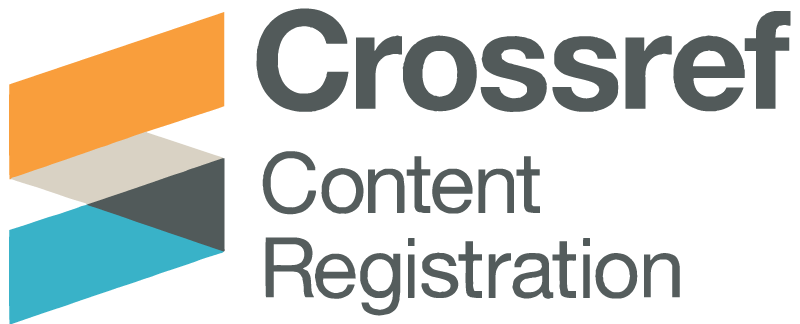Motivation Towards Learning English Influencing Willingness to Communicate in English
DOI:
https://doi.org/10.59743/jau.v35i3.721Keywords:
Arab learners. ESL, motivation, willingness to communicateAbstract
Willingness to communicate (WTC) and motivation are important factors and plays a major role in learning English as second language (ESL). This paper aimed to investigate the relationship between Willingness to Communicate (WTC) and second language. One hundred eighty learners form different Arab countries were surveyed in International Islamic University Malaysia (IIUM) in Kuala Lumpur campus to conduct this research. Correlation and predictive relationship were tested. Findings revealed there were significant correlation and predictive relationship between WTC and motivation (r=.211, p<.01) and (F(1, 179 )= 8.274,R2=.044, B = .242, P=005<.01) respectively. Willingness and motivation are significant factors that facilitate communication in language learning and teaching.
References
Al Amrani, Said Nasser Ali (2019) Communication and affective variables influencing Omani EFL learners’ willingness to communicate. Journal of Research in Applied Linguistics 10(1):51-77
Clarke, et al. (2009). Student Intercultural Proficiency From Study Abroad Programs. Journal of Marketing Education, 31(2), 173–181. https://doi.org/10.1177/0273475309335583
Clement, R., Baker, S. C., & MacIntyre, P. D. (2003). Willingness to communicate in a
second language the effects of context, Norms, and vitality. Journal of Language and
Social Psychology, 22(2), 190-209.
Dewaele, Jean-Marc (2019).The effect of classroom emotions, attitudes toward English, and
teacher behavior on willingness to communicate among English foreign languag learners.
Journal of Language and Social Psychology 38(4):523-535.
Dörnyei, Zoltán (2003). Attitudes, orientations, and motivations in language learning:
Advances in theory, research, and applications. Language learning 53(SI):3-32.
Gardner, R. C. (1985). Social psychology and second language learning: The role of attitude
and motivation London: Edward Arnold Publishers.
Ieva, C., & Riamonda, M.-H.(2002). Developing students' intercultural communicative
competence: towards effective university learning environments. Socialinai mokslai,
(36), 48-56.
Kocaman, Orhan J Abant İzzet Baysal Üniversitesi Eğitim Fakültesi Dergisi
(2016).Communication barriers that junior and senior ELT students experience in the
process of learning a foreign language. 16(4):1779-1794.
MacIntyre, P. D., Baker, S. C., Clement, C.,& Donovan, L. A. (2003). Talking on order to
learn: Willingness to communicate and intensive language programs. The Canadian
Modern Language Review, 59(4).
Maharaja, Gita (2018). The Impact of Study Abroad on College Students' Intercultural
Competence and Personal Development. International Research and Review 7(2):18-41.
McCroskey, J., C. (1992). Reliability and Validity of the Willingness to communicate Scale. DOI: https://doi.org/10.1080/01463379209369817
Communication Quarterly, 40(1), 16-25.
Peng, J. E. (2007). Willingness to communicate in an L2 and integrative motivation among
college students in an intensive English language program in China. University of Sydney
Papers in TESOL, 2(33-59).Al Amrani, Said Nasser Ali
Communication and affective variables influencing Omani EFL learners’ willingness to communicate. Journal of Research in Applied Linguistics 10(1):51-77.
Clarke III, Irvine, et al.
Student intercultural proficiency from study abroad programs. Journal of Marketing Education 31(2):173-181. DOI: https://doi.org/10.1177/0273475309335583
Dewaele, Jean-Marc
The effect of classroom emotions, attitudes toward English, and teacher behavior on willingness to communicate among English foreign language learners. Journal of Language and Social Psychology 38(4):523-535. DOI: https://doi.org/10.1177/0261927X19864996
Dörnyei, Zoltán
Attitudes, orientations, and motivations in language learning: Advances in theory, research, and applications. Language learning 53(SI):3-32. DOI: https://doi.org/10.1111/1467-9922.53222
Maharaja, Gita
The Impact of Study Abroad on College Students' Intercultural Competence and Personal Development. International Research and Review 7(2):18-41.
Peng, Jian E
Willingness to communicate in an L2 and integrative motivation among college students in an intensive English language program in China. University of Sydney papers in TESOL 2(1):33-59.
Ushioda, Ema, and Zoltán Dörnyei
Beyond global English: Motivation to learn languages in a multicultural world: Introduction to the special issue. The Modern Language Journal 101(3):451-454. DOI: https://doi.org/10.1111/modl.12407
Wang, Hui, Anqi Peng, and Meagan M Patterson
The roles of class social climate, language mindset, and emotions in predicting willingness to communicate in a foreign language. System 99:102529. DOI: https://doi.org/10.1016/j.system.2021.102529
Wang, Miaoqing, Jaewoo Shim, and Heechul Lee
WTC and Motivation in English Learning among Chinese Senior High School Students. Studies in English Language & Literature 48(3):105-130.
Yashima, Tomoko, Lori Zenuk‐Nishide, and Kazuaki Shimizu
The influence of attitudes and affect on willingness to communicate and second language communication. Language learning 54(1):119-152. DOI: https://doi.org/10.1111/j.1467-9922.2004.00250.x
Downloads
Published
How to Cite
Issue
Section
License
Copyright (c) 2020 صالح علي النوري، عبدالناصر العامري، عبدالعزيز ثبوت، جميلة عمر

This work is licensed under a Creative Commons Attribution 4.0 International License.
The rights relate to the publication and distribution of research published in the Journal of Alasmarya University where authors who have published their articles in the Journal of Alasmarya University should Know how they can use or distribute their articles. They reserve all their rights to the published works, such as (but not limited to) the following rights:
- Copyright and other property rights related to the article, such as patent rights.
- Copyright on all open access article in Journal of Alasmarya published by Alasmarya Islamic University is retained by the author(s) and they can used in it's future works, including lectures and books, the right to reproduce articles for their own purposes, and the right to self-archive their articles..
- Authors grant Alasmarya Islamic University a license to publish the article and identify itself as the original publisher.
- Authors also grant any third party the right to use the article freely as long as its integrity is maintained and its original authors, citation details and publisher are identified.
The Creative Commons Attribution License 4.0 formalizes these and other terms and conditions of publishing articles









